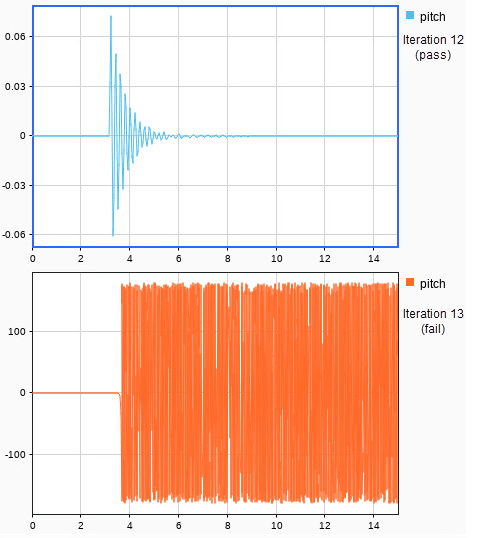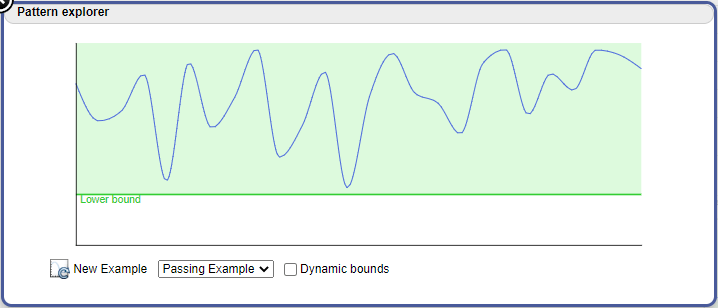Assessments, Criteria, and Verification
Functional testing includes assessing simulation behavior and comparing simulation data to expected results. You can assess simulation behavior by:
Using temporal and logical assessments in a test case.
Including
verifystatements and other operators in a Test Assessment or Test Sequence block. Use the Test Sequence block to specify a series of steps to stimulate the component or system under test. Use the Test Assessment block to assess the behavior of the component or system under test.Using blocks from the Model Verification library.
You can assess simulation data by:
Comparing test output to baseline data or comparing the output of two simulations using equivalence criteria.
Using value or time tolerances when comparing simulation data to baseline data or comparing two simulations. The available types of tolerances are relative, absolute, leading, and lagging. Leading and lagging tolerances are useful for comparisons in which the data timing differs, such as comparisons between different solvers, or comparisons between models running on your desktop and code running on a target.
Using a custom criteria script to process simulation data.
For an overview of the different verification methods, see Assess Simulation and Compare Output Data.
Blocks
| Observer Reference | Create and contain an Observer model |
| Observer Port | Wirelessly link signals to use with verification |
| Test Sequence | Create simulation testing scenarios, function calls, and assessments |
| Test Assessment | Assess and verify behavior of system under test |
| Sequence Viewer | Display messages, events, states, transitions, and functions between blocks during simulation |
| Assertion | Check whether signal is zero |
Classes
sltest.testmanager.Assessment | Logical or temporal assessment object (Since R2022a) |
sltest.testmanager.AssessmentSymbol | Symbol used in assessment (Since R2022a) |
sltest.testmanager.TestCase | Create or modify test case |
Tools
| Simulink Test Manager | Model and code testing in different execution environments, manage test suites, and analyze and report results |
Syntax Operators
Topics
- Assess Simulation and Compare Output Data
Assess simulation behavior and compare to expected output, use
verifyandassertstatements and run-time assessments. - Assess Temporal Logic by Using Temporal Assessments
Use temporal assessments to assess model timing and verify temporal signal logic in the System Under Test.
- Logical and Temporal Assessment Syntax
Learn about the types of logical and temporal assessments and their syntax.
- Verify Model Simulation by Using When Decomposition
Connect Test Assessment blocks to your model and author verify statements within a
Whendecomposition sequence to assess model simulation. - Verify Multiple Conditions at a Time
Including multiple
verifystatements in a single test step usingifstatements. - Test Sequence and Assessment Syntax
Operators and expressions used in Test Sequence and Test Assessment blocks and Stateflow® charts.
- Access Model Data Wirelessly by Using Observers
Wirelessly access signal and data information.
- Observe Messages
Observe message signals and obtain message details.
- Observe Conditional Subsystem Signals
Observe signals in conditional subsystems.
- Observe Internal Variables of an FMU
Use an observer to access internal variables of an FMU.
- Set Signal Tolerances
Specify value and time tolerances for baseline and equivalence criteria.



